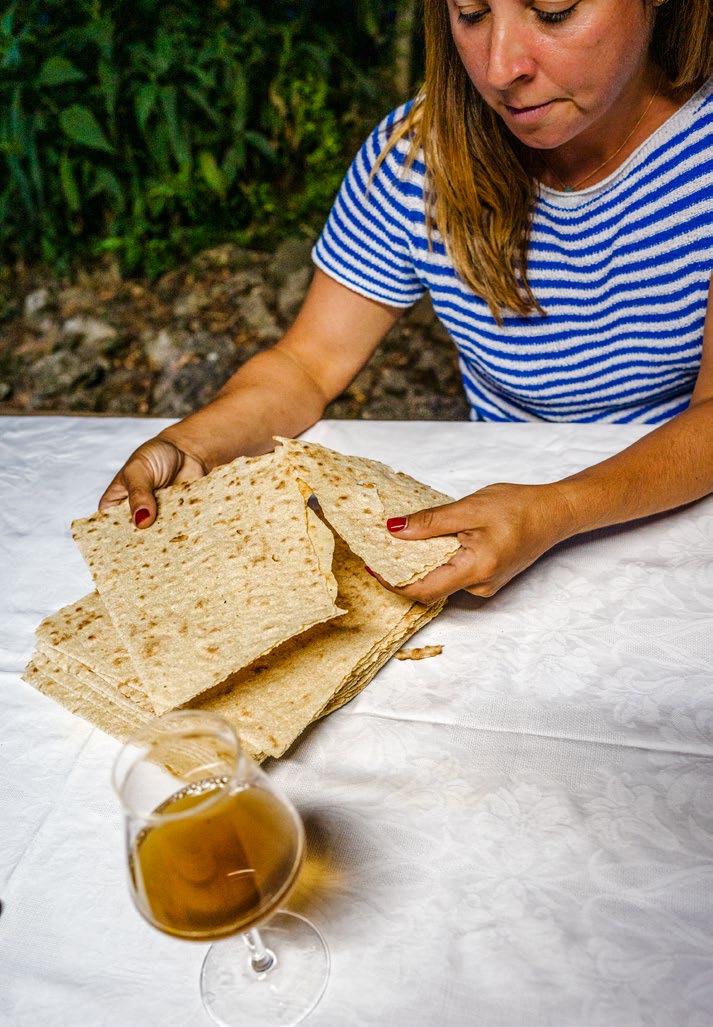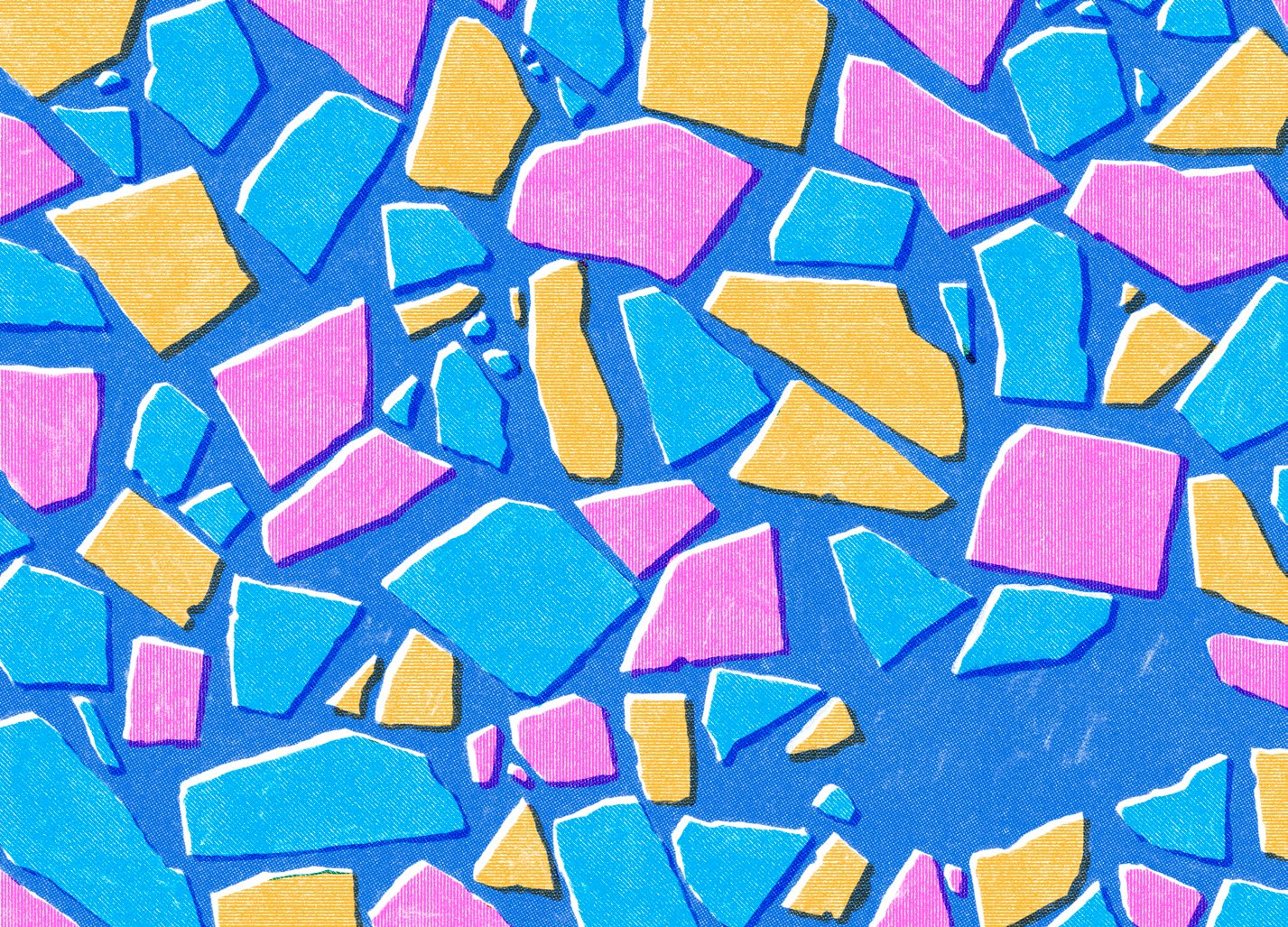Pane Carasau
Pane Carasau
Crispy Sardinian Flatbread
Sardinia has literally thousands of styles of bread, and while the island is unique in Italy for its incredible variety of ornamental loaves, one of the most common breads is actually a super-simple one. Su Civraxiu was the sourdough bread for peasant farmers, but shepherds needed something more portable than a big 5-pound loaf. They developed Pane Carasau, a type of bread that dried hard after it came out of the oven so it could be folded to fit into knapsacks; plus, it stayed fresh for months. Think of the baking process like that of a twice-baked pita. Air trapped in a thinly rolled dough expands while baking, separating it into two layers. These layers can be cut apart, then baked again until crisp but still pliable. The single baked layers are called pane lentu. This soft, pliable flatbread is used as a pita or sandwich roll. Some people even use it as a substitute for a hamburger bun.
Ingredients (4)
Ingredients (4)
Instructions
Combine the water (1 cup), fine semolina (1 ¾ cups), salt (1 tsp), and lievito madre (⅓ cup) in a medium bowl. Using your hands, mix until the dough comes together and there is no dry semolina left in the bowl.
Since this is a drier dough than others, you may need more leverage to incorporate the flour, so turn the dough out onto a clean work surface and knead vigorously just until no dry flour bits remain.
Return the dough to the bowl, cover with plastic wrap, and set aside at room temperature for 15 minutes.
Invert the bowl onto a clean, unfloured surface, allowing the dough to detach itself from the bowl. Knead until smooth, 4 to 5 minutes.
Roll the dough into a 3-inch-thick log and cover tightly with plastic wrap. Set aside for at least 30 minutes or up to 1 hour.
Preheat the oven to 500°F and set a baking steel or stone on the bottom rack to preheat as well.
Using a bench scraper or sharp knife, cut the dough into six equal pieces weighing about 120 grams each. Cover with a clean kitchen towel and set aside.
Pour a small pile of semolina on your work surface. Dip both sides of one piece of dough in the semolina, then, on a clean portion of your work surface, use your fingertips to press the dough into a roughly round disk.
Place a rolling pin in the center of the dough, orienting it horizontally so the ends are at 9 o’clock and 3 o’clock. Push from the center away from you. Turn the dough 1/8 of a turn and repeat. Continue this rolling and turning process until the disk is 11 to 12 inches in diameter and about 1/16 inch thick.
Set aside, covered with a clean kitchen towel, and repeat with the remaining dough; do not stack the disks of dough as you finish them. Let the disks rest for 20 minutes.
Using a lightly floured pizza peel, transfer one disk of dough to the baking steel and bake until the dough begins to bubble, about 2 minutes.
Using a pizza peel and tongs, flip the dough and bake for 2 minutes more, or until the bread puffs and the layers separate.
Remove from the oven with the peel and set aside on a clean surface until cool enough to handle, then slice the bread open along the edge, resulting in two identical round pieces.
Repeat with the remaining dough and set aside the layers in a pile.
Working in batches as your baking steel permits, bake the split layers until crisp and starting to brown, about 2 minutes.
Serve as Pane Frattau or drizzle with olive oil and saltsalt, then toast, a preparation known as Pane Guttiau in Sardinia.
The pane carasau will keep in a sealed bag at room temperature for up to 6 months.
Notes
Notes
A baking steel, ideally, or a stone, is essential for baking pane carasau. The steel or stone will transfer a burst of heat to the raw dough that will give it the lift it needs to puff up.
For best results, roll your dough to the thickness of 12 sheets of printer paper. The diameter isn’t as critical. This recipe is made to be rolled out in 10- to 12-inch-diameter pieces. The classic is closer to 13 inches, but smaller rounds will be easier to execute in your home oven.

